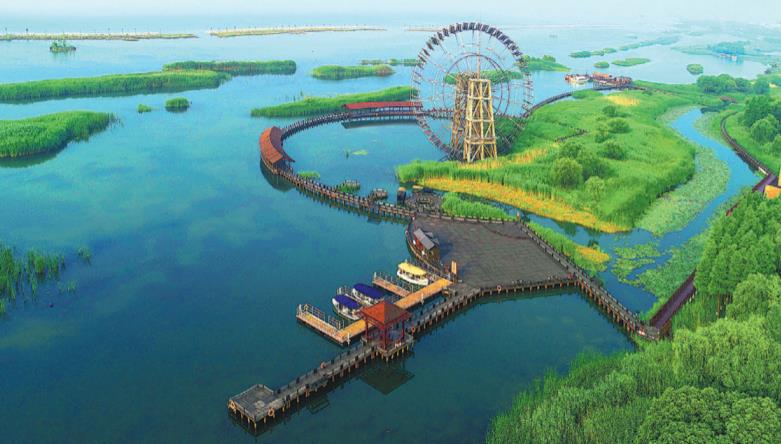Blueprint details eco-friendly development of Yangtze delta
The Yangtze River Delta is aiming for greener development and closer integration of its cities, as stipulated in a government blueprint released on Tuesday.
The Yangtze River Delta is aiming for greener development and closer integration of its cities, as stipulated in a government blueprint released on Tuesday.

The National Development and Reform Commission issued a master plan for an eco-friendly, integrated development of the Yangtze River Delta.
The 2,300-square-kilometer demonstration zone - Shanghai's Qingpu district; Suzhou's Wujiang district in Jiangsu province; and Jiaxing's Jiashan county in Zhejiang province - sits in the middle of the delta.
Over 95 percent of the zone's main water bodies should by 2025 reach the National IV standard water quality level, and the Taipu River should maintain National III standard, making it fit for aquaculture or consumption.
The green coverage should reach 42 percent, and the greenway should exceed 500 km.
"The mission of this zone is to strengthen environmental protection and promote eco-friendly growth for a higher-quality integrated development," said Ma Chunlei, zone executive committee director and deputy secretary-general of Shanghai.
Qingpu district has strict environmental protection regulations and started relocating factories from the protection zone, said its governor, Yu Xufeng.
Xu Mingyang, Jiashan county governor, said a 2.04 billion yuan ($290 million) lake restoration and river-linking project will involve the county's 55 lakes.
Li Ming, Wujiang district governor, said Qingpu and Jiashan officers are patrolling the rivers.
Closer integration - spatial planning, cross-regional transportation, administrative approval and public service sharing - is a central point in the plan.
Unified spatial planning, conducted by Shanghai, Zhejiang and Jiangsu experts, will focus on the water system, ecology, infrastructure and transportation, cultural and tourist sites, and industrial development.
Shanghai metro line 17 will extend to connect with Suzhou metro line 10. High-speed Shanghai-Suzhou-Huzhou, running east-west, and Nantong-Suzhou-Jiaxing-Ningbo, running north-south, railway lines will be built.
Unified systems for business registration, expertise certificate approval, credit and tax management will be created.
To ensure that economic growth and environmental protection are coordinated, the plan encourages the development of low-environmental-impact industries.
To make better use of natural and cultural resources, the zones should promote eco-tourism, sports and health and wellness industries. Green finance, information and new energy industries will be encouraged.
One company fitting the bill is Huawei Technology, which this year built a R&D center in Qingpu district.
"The center has generated 200 million yuan in taxes for this district and we estimate that this figure will exceed 1 billion next year," said Yu.
The district will push forward development of the China Beidou Technology Innovation Base in the west Hongqiao area in Shanghai and attract artificial intelligence companies and integrated circuits manufacturers, Yu said.

